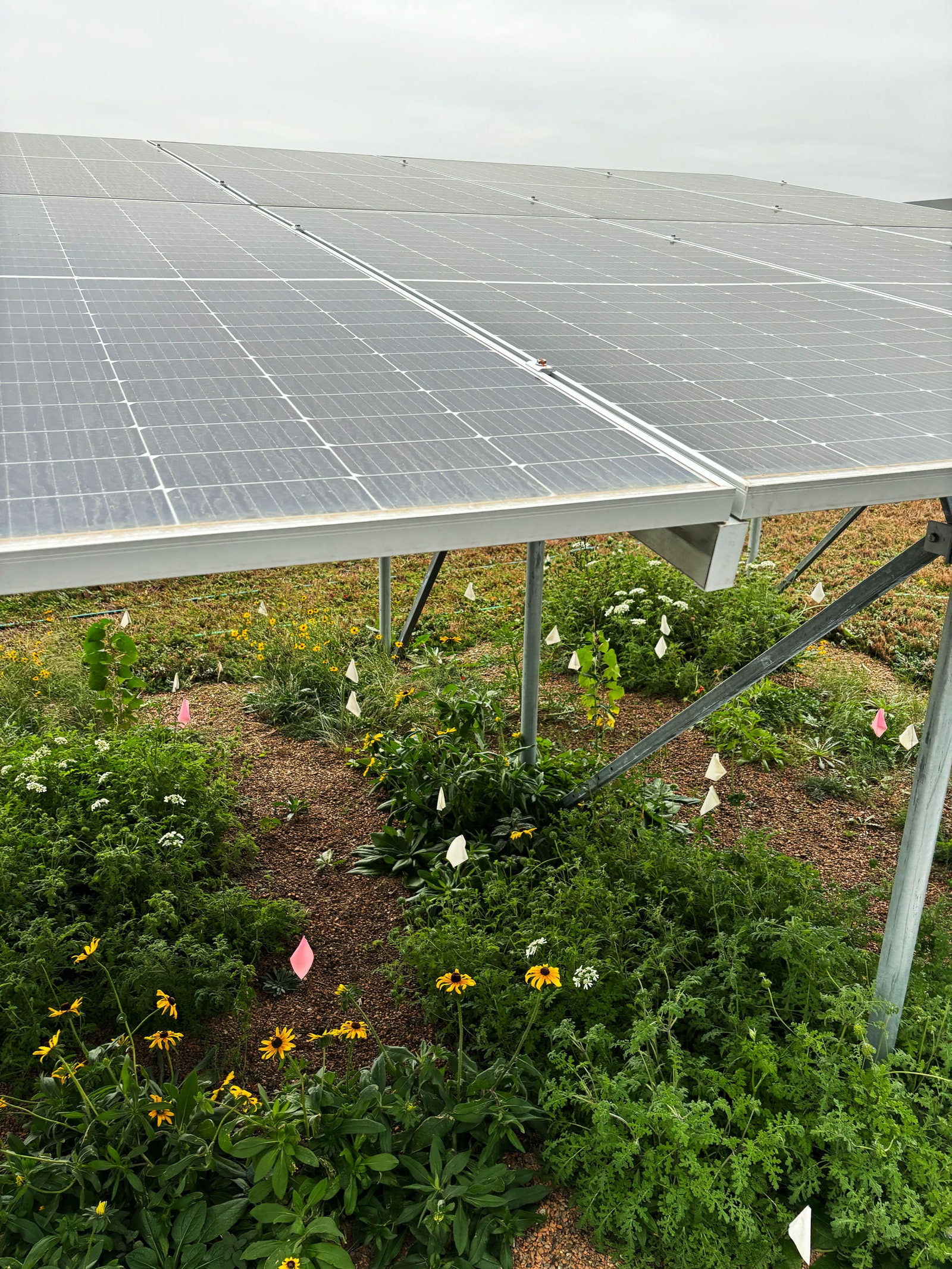Five stories off the ground at Colorado State University, a highly unlikely garden grows under a long row of rooftop solar panels. It’s late October at 9 am, when the temperature is 30 degrees Fahrenheit and the wind is cutting. Not long before my arrival, researchers had pulled the last frost-intolerant crops out of the substrate underneath the panels, a total of 600 pounds for the season. In their place, cool-season foods like leafy greens—arugula, lettuce, kale, swiss chard—still grow, shaded from the intense sunlight up here.
This is no ordinary green roof, but a sprawling, sensor-laden outdoor laboratory overseen by horticulturalist Jennifer Bousselot. The idea behind rooftop agrivoltaics is to emulate a forest on top of a building. Just as the shade of towering trees protects the undergrowth from sun-stress, so too can solar panels encourage the growth of plants—the overall goal being to grow more food for ballooning urban populations, all while saving water, generating clean energy, and making buildings more energy efficient.
Photograph: Matt Simon
“When you stop and think about what we’re going to need as a society—our building blocks—it’s going to be food, energy, and water, just like it always has been,” says Bousselot. With rooftop agrivoltaics, “you can produce, especially in a primarily unused space, two of those things and conserve the third.”


